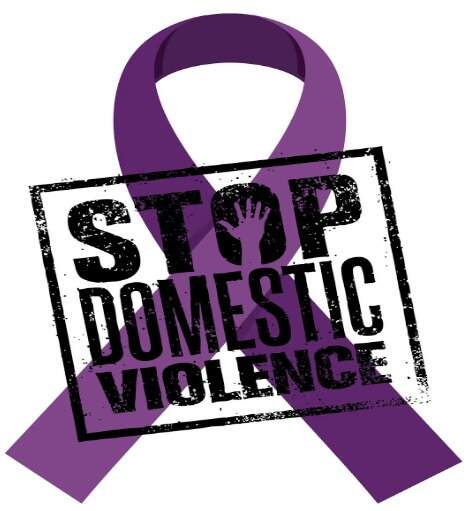Introduction
Domestic violence is a pervasive and deeply troubling issue that affects individuals across all demographics, transcending socioeconomic, cultural, and geographic boundaries. It is a harsh reality that often occurs behind closed doors, shrouded in silence and shame.
Recently, Vivek Bindra, a popular motivational speaker, entrepreneur, and social media influencer, is facing accusations of domestic violence against his wife. In this light, this article aims to shed light on the alarming prevalence of domestic violence, explore its root causes, and discuss the crucial steps needed to combat this societal menace.
What is domestic violence and why does it happen?
Domestic violence includes any violence inflicted upon a person by a biological relative. Domestic violence is a way to infiltrate fear or prove dominance over another person. There are a variety of factors that lead individuals to resort to domestic violence– anger issues, domination, the person may find it thrilling, prove superiority, or simply for pleasure.
Domestic violence is of various kinds- physical, social, mental, verbal, economic, or sexual abuse. Social stigma, illiteracy, poverty and low income, ignorance, low socio-economic and caste status, and unequal access to education, in addition to entrenched cultural norms and weak legal structures, are the major factors behind the cases of domestic violence.
In many families, the male is the sole earner. This creates an unequal balance of power between husband and wife, where the wife may even be subjected to various abuses by her husband. Men often tend to compensate for their demeaning jobs by being assertive in other areas such as households. Women who choose to work outside their homes also face mental and physical abuse, accusing them of neglecting their household duties. Women’s work is often considered secondary and unnecessary.
Social stigma and victim-blaming further prevent the victims from coming out and registering their complaints. Shame and pressure from family members, as well as concerns regarding the family’s pride and honour, lead to many cases being unreported. Many times, the victim is gaslighted and is made to feel that it was all her fault.
The abuser may act very sweetly at other times and may turn violent suddenly. In many instances, family members often bribe the officials, which hampers the further proceedings of the case.
Prevalence and Scope
The World Health Organization estimates that approximately one in three women worldwide has experienced either physical or sexual intimate partner violence or non-partner sexual violence in their lifetime. Men can also be victims of domestic violence, though it is often underreported due to societal stereotypes and stigma. The prevalence of domestic violence underscores the urgent need for awareness, education, and intervention.

Domestic violence in India: Are women safe in their households?
In India, intimate partner violence is a major challenge, affecting 32% of ever-married women. According to the data from the National Crime Records Bureau, The crime rate against women rose by 15.3% in 2021.
The highest number of crimes that were reported against women were under the category of ‘cruelty by husband or his relatives’ which accounted for 31.8%. this was followed by ‘assaulting women with intent to outrage their modesty’, accounting for 20.8%, ‘kidnapping and abduction of women’ (17.6%), and ‘rape’ (7.4%).
The NCRB data also shows that 6,589 cases of dowry deaths were reported in 2021. Disturbingly, spousal violence in India encompasses physical, emotional, and sexual abuse, making it a pressing public health concern.
The National Commission for Women registered more than 6,900 complaints under the category of ‘protection of women from domestic violence’ in the year 2022.
The Abhayam Helpline in Ahmedabad received 74,949 calls related to domestic violence, averaging about one call every five minutes. During the lockdown period, we witnessed a sharp rise in domestic violence cases. This was because the husband and wife would be together for the whole time, which led to an increase in feuds between them and a rise in physical and verbal abuse.
Snehitha is the gender help desk of the Kudumbashree in Kerala. In 2022-23, it handled as many as 778 cases of domestic violence, which is the highest so far, followed by 256 in 2020-21 and 251 in 2021-22. It has so far reported Ninety cases related to family disputes this year followed by 70 cases related to alcoholism, 19 child-related cases, and 15 cases of atrocities against women.
Impact on Victims
The repercussions of domestic violence extend far beyond the immediate physical harm. Victims often suffer long-term emotional and psychological trauma, leading to a range of mental health issues, including depression, anxiety, and post-traumatic stress disorder. Children witnessing domestic violence may experience developmental challenges and are at a higher risk of perpetuating the cycle of abuse in their relationships.
Breaking the Silence
One of the most significant challenges in addressing domestic violence is the reluctance of victims to come forward. Fear of retaliation, social stigma, and feelings of shame and guilt can all contribute to a culture of silence. It is essential to create safe spaces where victims feel empowered to share their experiences without judgment.
Legal Safeguards against Domestic Violence in India
With the amendment of the Indian Penal Code in 1983, A special section, numbered 498A, was added to the IPC. This section states that – “Husband or relative of the husband of a woman subjecting her to cruelty”— shall be imprisoned for a term which may extend to three years and shall also be liable to fine. Sec 498A IPC is cognizable, non-compoundable, and non-bailable.
Another safeguard available to women against domestic violence is the provision of the Indian Penal Code (45 of 1860) Amendment Act, 1986 whereby Section 304B has been added to the Indian Penal Code which addresses dowry death.
In 2005 the Protection of Women from Domestic Violence Act was enacted: It provides a specific definition of Domestic Violence. It also gives a women’s right to reside in their “matrimonial household”, and that she cannot be evicted from her house as she has a rightful share in it.

Education and Awareness
Prevention begins with education and awareness. Promoting healthy relationship dynamics, teaching conflict resolution skills, and challenging societal norms perpetuating violence is essential. Comprehensive sex education that includes discussions on consent, boundaries, and respectful behaviour can contribute to a culture of mutual respect and understanding.
Community Involvement
Communities can serve as powerful allies in the fight against domestic violence. Establishing support networks, community outreach programs, and local initiatives can provide resources and assistance to those in need. Breaking the isolation that often accompanies domestic violence is a crucial step toward fostering healing and resilience.
The Role of Technology
In the digital age, technology can be both a blessing and a curse in the context of domestic violence. While social media and online platforms can serve as tools for awareness and support, they can also be used by abusers to perpetrate harassment and control. It is essential to leverage technology for positive change, providing online resources and platforms that empower victims and facilitate community engagement.
Conclusion
Domestic violence is a pervasive issue that demands collective action. By understanding the root causes, breaking the silence, implementing legal measures, promoting education, and fostering community involvement, we can work towards creating a society where intimate relationships are built on respect, equality, and support.
It is time to bring domestic violence out of the shadows and into the light, ensuring that no one has to endure the pain and trauma of abuse.
-MALYA SINGH AND ADITYA SRIVASTAVA
MUST READ: CARDIOVASCULAR DISEASES: RISING TREND OF HEART ATTACKS IN YOUNG ADULTS





